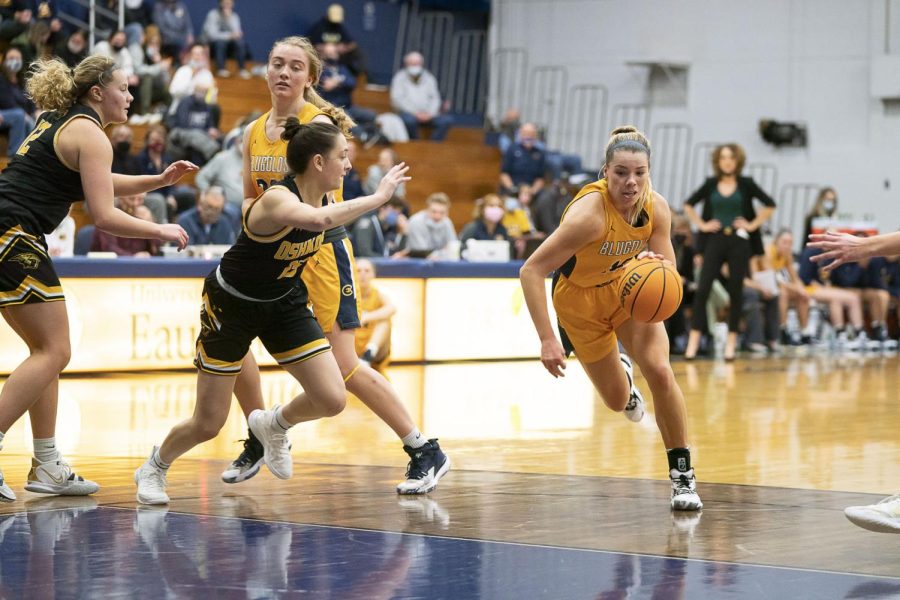At some point during college, many students feel tired and weak. For most, this is from a hectic schedule and lack of sleep, but for a small minority, a disease called anemia is the cause.
What is it?
“Anemia has to do with either a decreased number or effectiveness in function of red blood cells,” Student Health Services physician Mark Williams said.
Red blood cells carry oxygen to different places in the body, Williams said, and what makes these cells is hemoglobin. Hemoglobin is an iron-based structure and when a person is iron deficient, one possible effect is being anemic, resulting in a decrease of oxygen reaching essential organs.
“Your body depends on oxygen to function, and if you don’t have enough, it means you don’t have enough going to the liver, brain and other vital organs,” Williams said.
In severe cases, Williams said this can make a person feel short of breath, tired, light-headed and weak feeling.
He also said in mild cases a person might just be a little tired and when they exercise, they’re short of breath quicker.
Senior Melissa Oathout has a rare form of anemia called spherocytosis. It differs from other forms of anemia because it really does not affect her daily life and she cannot do anything to correct it.
“My cells are perfectly round . they’re supposed to be kind of funny shaped,” Oathout said. She said almost everyone on her mom’s side of the family is anemic but her mom is the only one who has seen side effects.
Several causes of anemia are iron, vitamin B12 and foliate deficiencies. Williams said cells increase in size but decrease in actual numbers. If this is the case, a person with anemia can alleviate their symptoms by taking supplements.
Anemia is diagnosed by using a Ferritin test, which is a kind of blood test.
Williams said there are dozens of types of anemia but there is a system in which it’s defined by the size of one’s RBCs. Cells can be thick, average or small and Williams said RBCs are small when a person is low in iron and the body tries to produce the most cells with what little iron it has, which causes their small size. Williams said this is the most common type of anemia college students have.
“Iron is a substance you take in your diet and if you don’t take enough, your body can’t make enough hemoglobin,” he said.
Whose at risk?
Women are more at risk than men because they lose iron and RBCs during their monthly periods, Williams said. He estimates that 10 to 15 percent of women ages 18 to 24 are anemic.
Although women are more likely to become anemic, they are not the only ones who can get it.
“Any one that has a chronic illness could be prone to anemia,” Williams said. He also said how if the body is already struggling with something, it’s more likely to struggle with something else.
Treatment?
Treating anemia is different from treating other illnesses, such as strep throat, in where there is a specific reason for the illness, Williams said. Anemia is more complicated.
“It’s not a disease in itself; it’s a condition that could have many different causes,” Williams said. “If you’re iron deficient, you need to take more iron.” Williams said the cause needs to be determined in order to find the appropriate method.
Oathout said her mom’s spleen kept killing off her RBCs, causing her to be sick all the time and she had to have her spleen removed.
“It was really hard when she didn’t know what was going on with her,” Oathout said. “As soon as she got her spleen removed, she was better.” Since having her spleen removed, however, she gets sick much more often because the spleen kills bacteria in the body.
This was a rare case though, and for many people, taking supplements and changing their diet can help them increase the iron in their bodies. Many foods naturally have a lot of iron in them, Williams said, and some include meats, green vegetables, fish, shrimp, breakfast cereals and peanut butter.
What’s a pica?
A very rare side effect of being anemic is having unusual cravings.
“If a person is significantly deficient in iron, they can sometimes get this craving for something odd,” Williams said. He has heard of people craving lead-based paint, dirt and clay but these are very rare cravings to have for anemics.
The severe cases of anemia are very rare to have and the mild cases are very manageable. Williams has sometimes had college students come in and claim to be very tired and have concern of whether they’re anemic.
“It almost never is,” Williams said. “If you’re anemic you could be tired. Most people that are mildly anemic don’t have any symptoms.”





